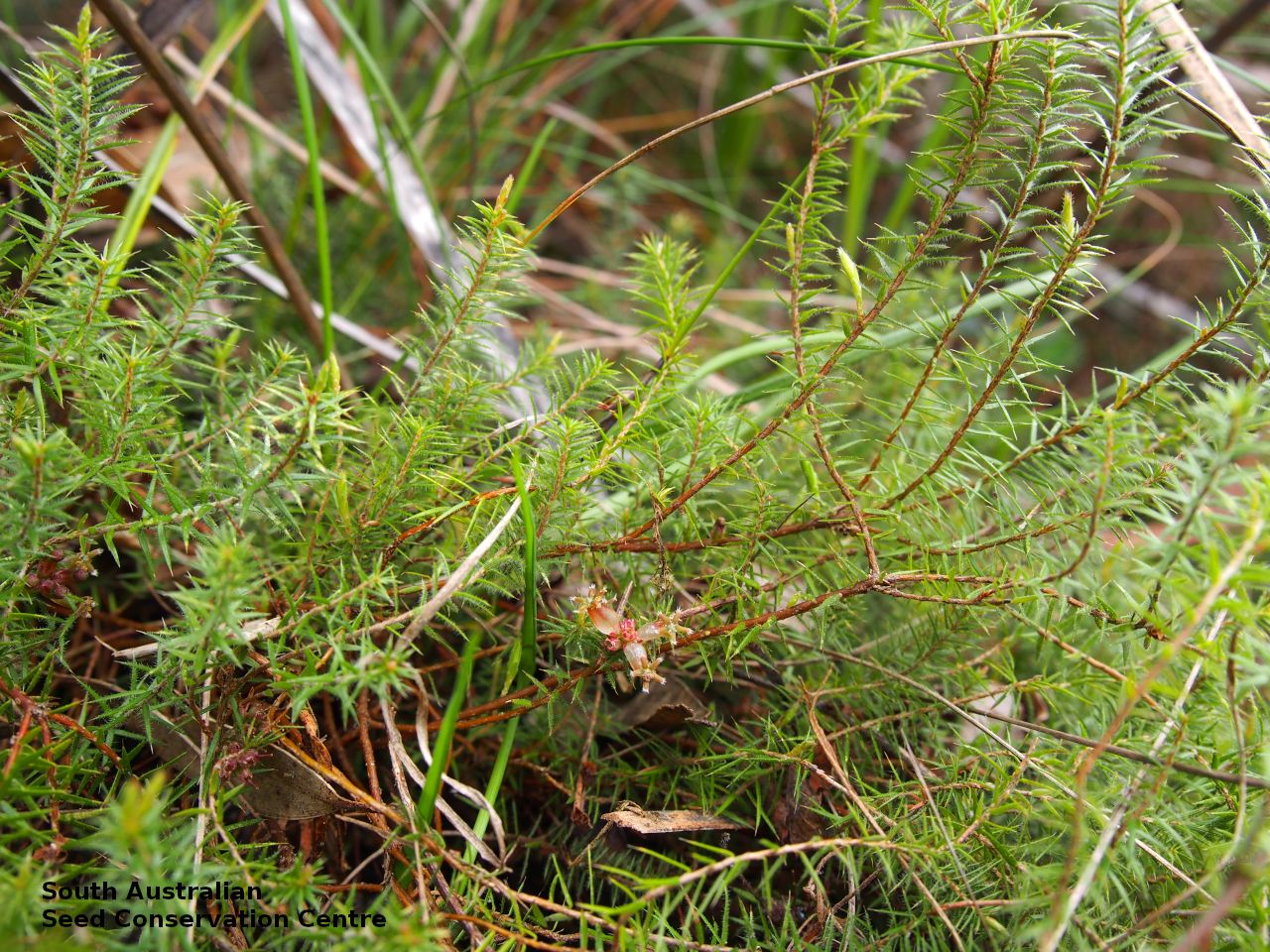
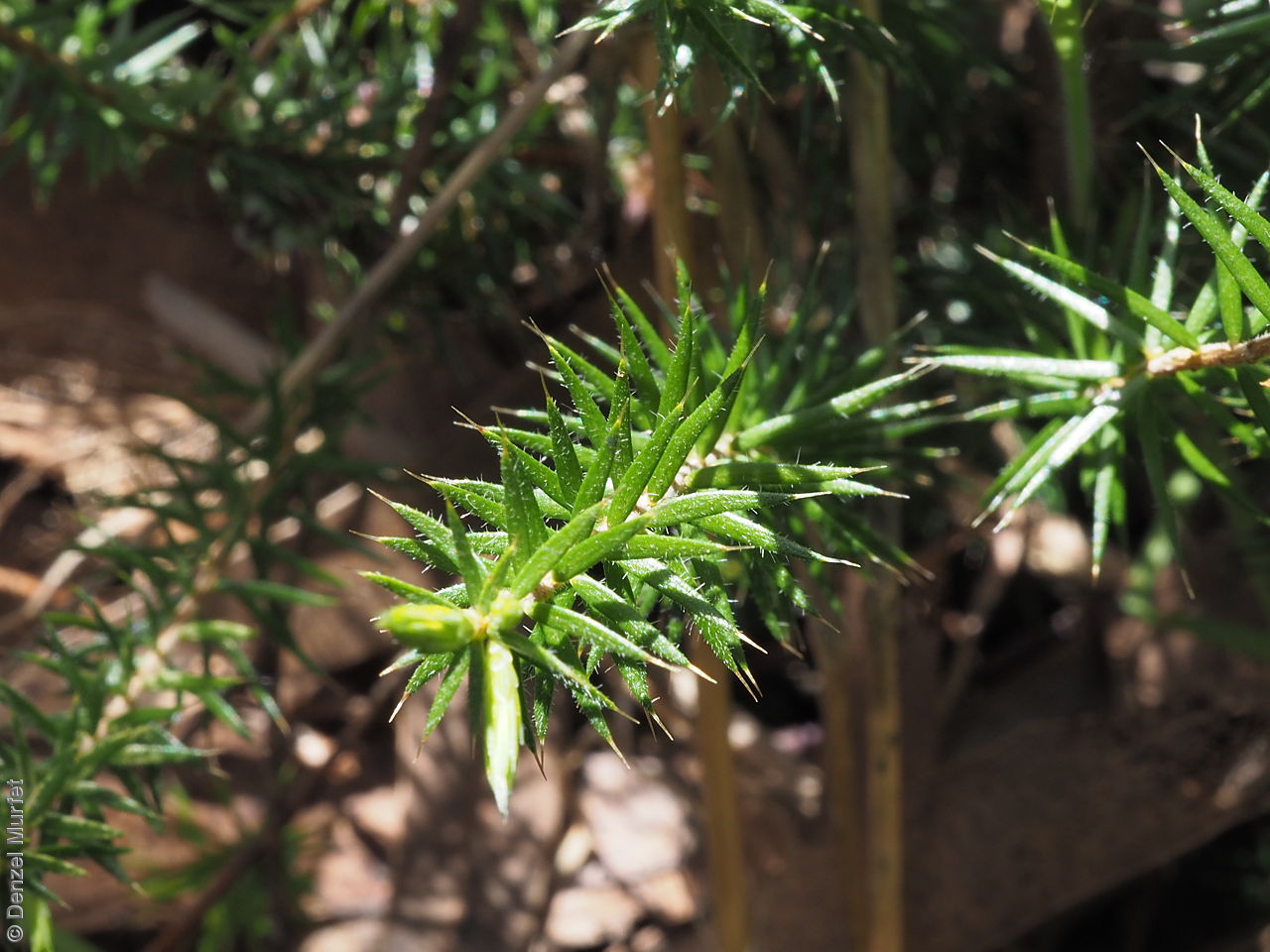
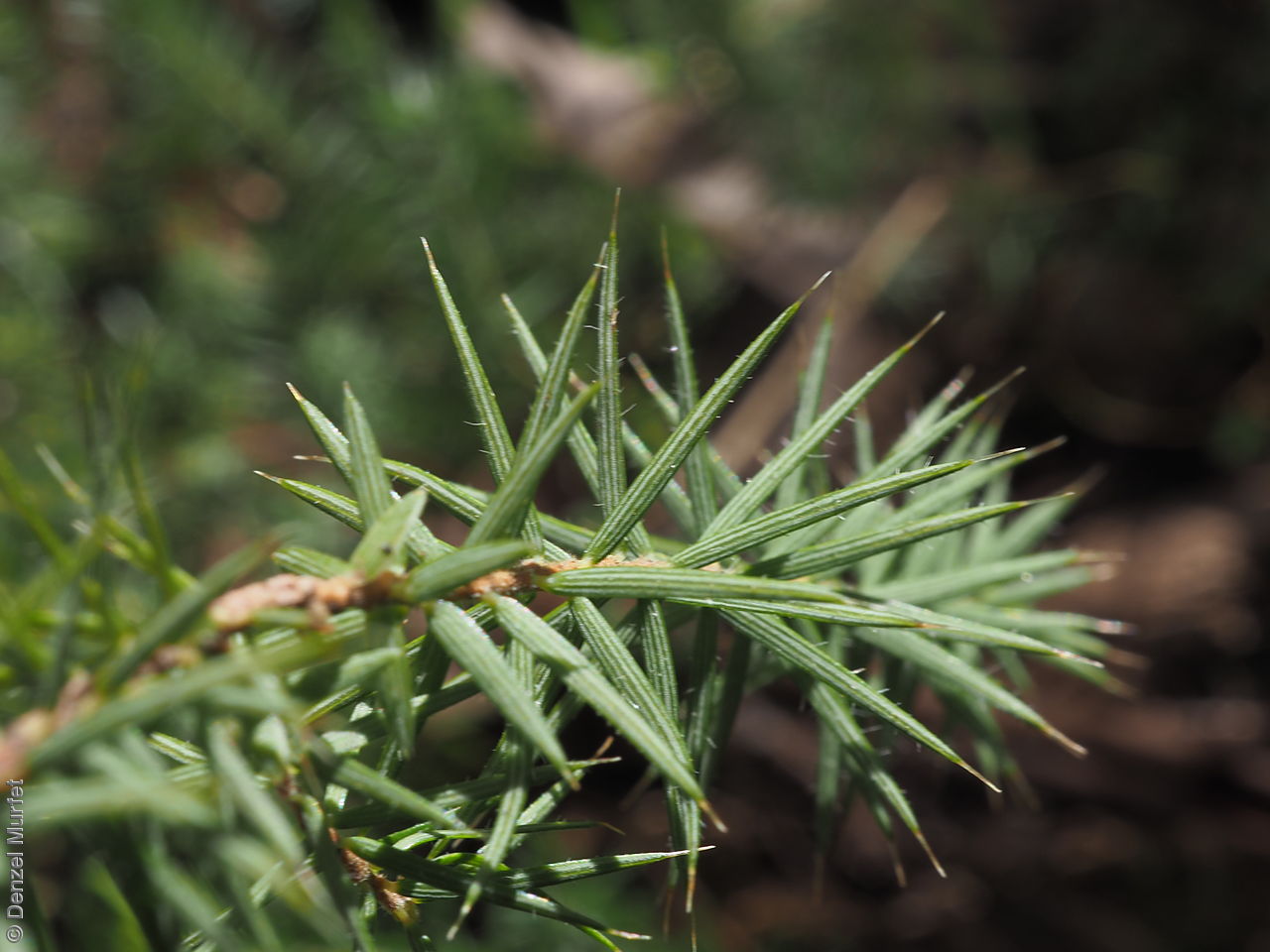
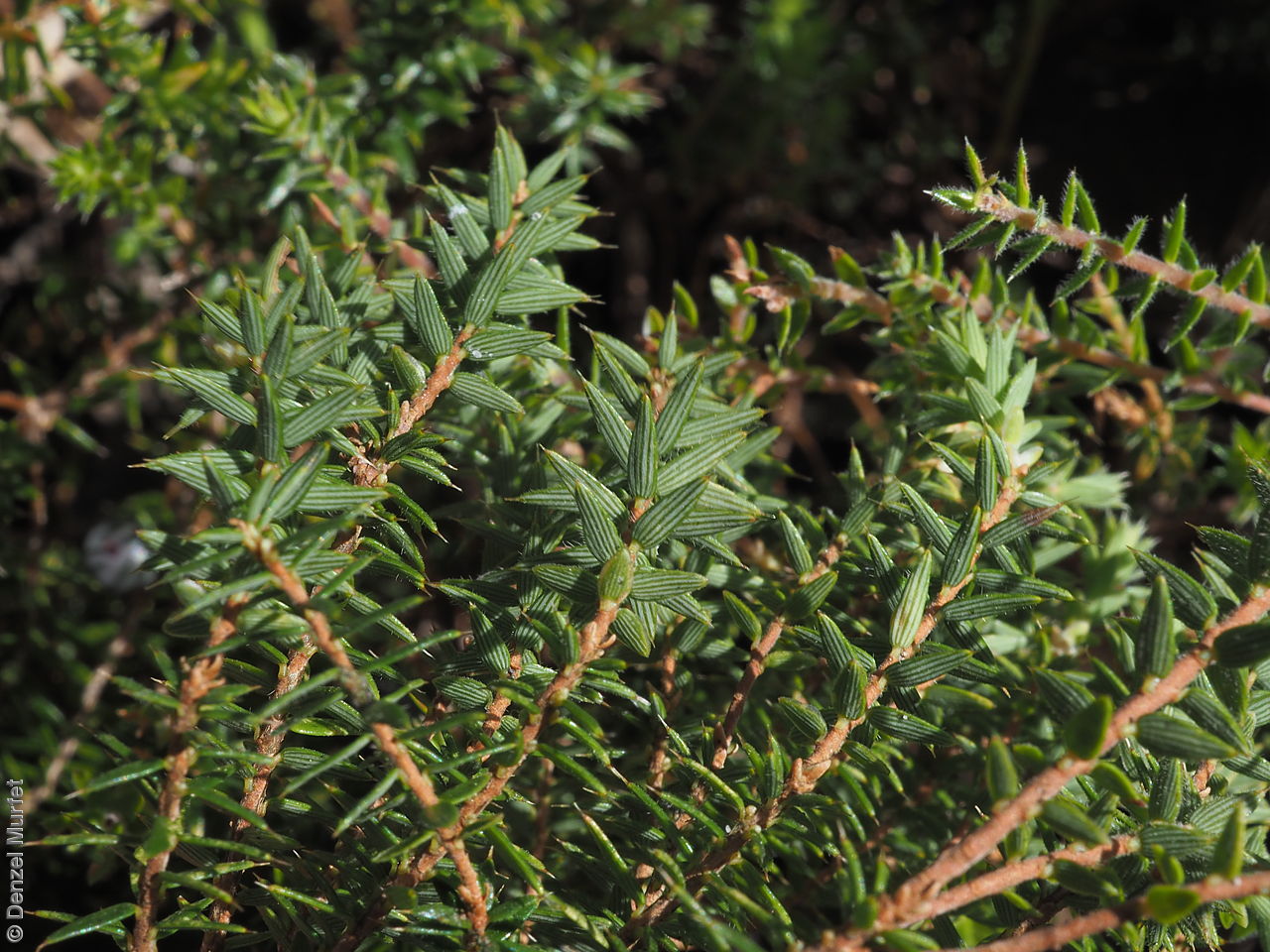
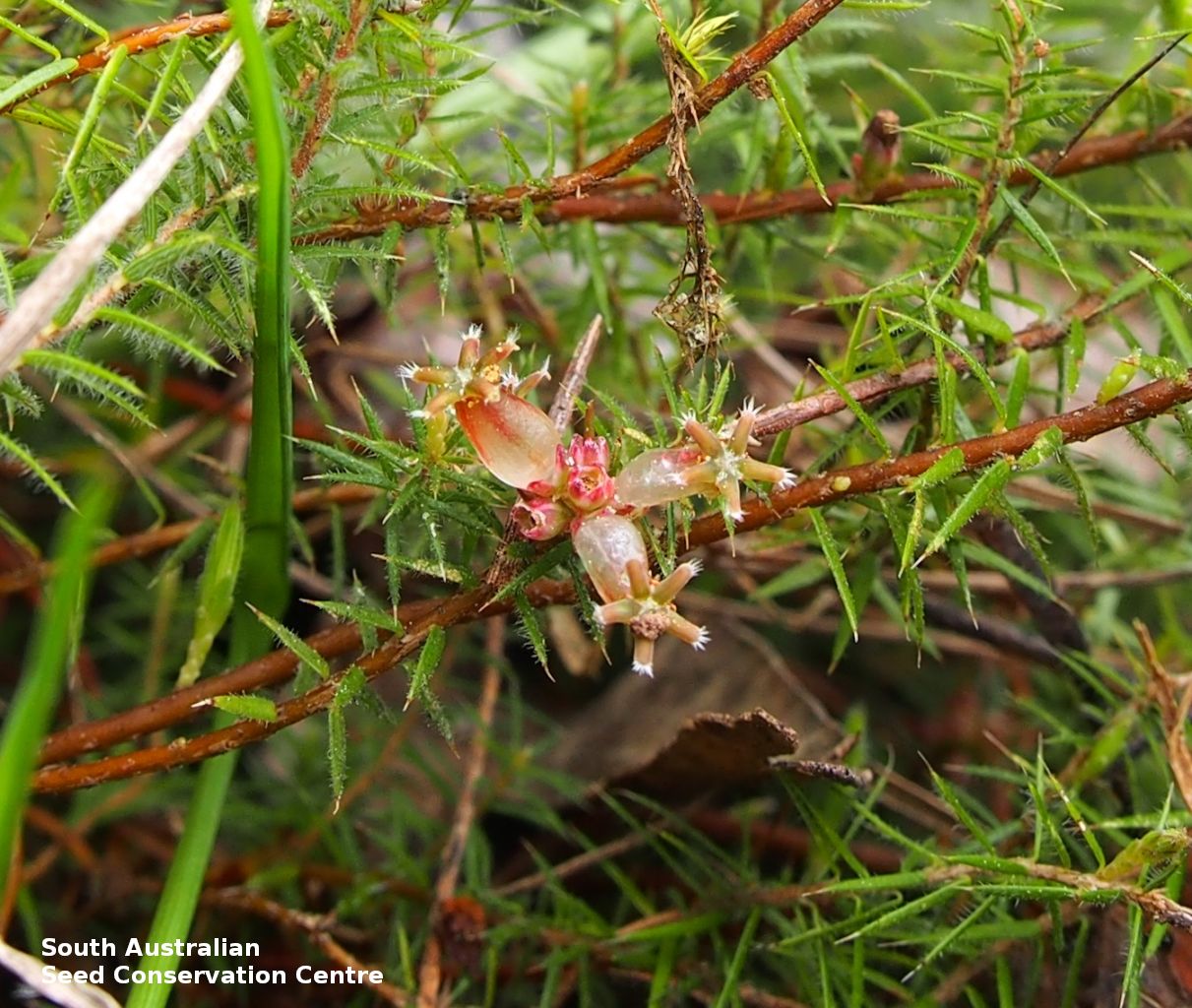
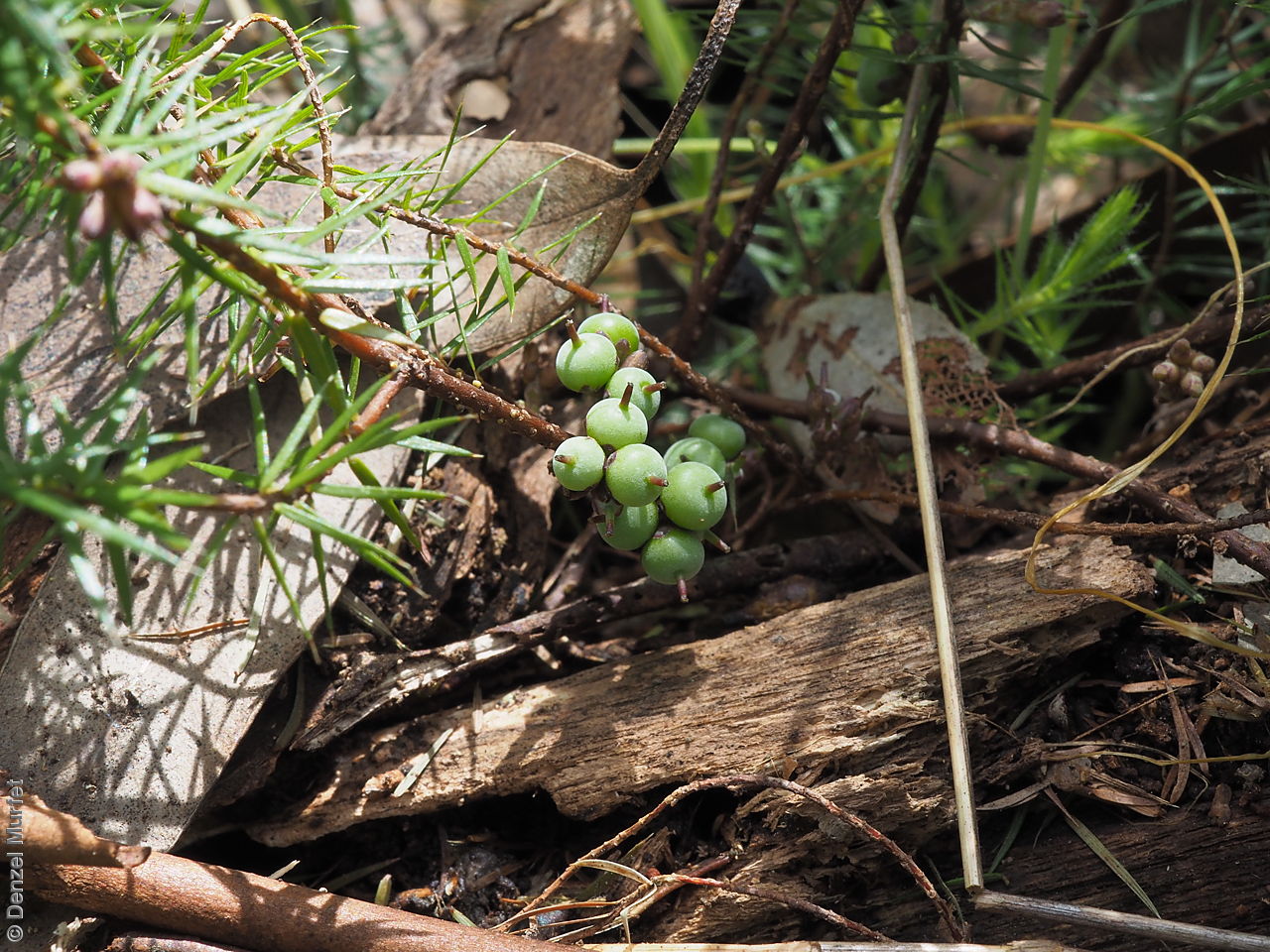
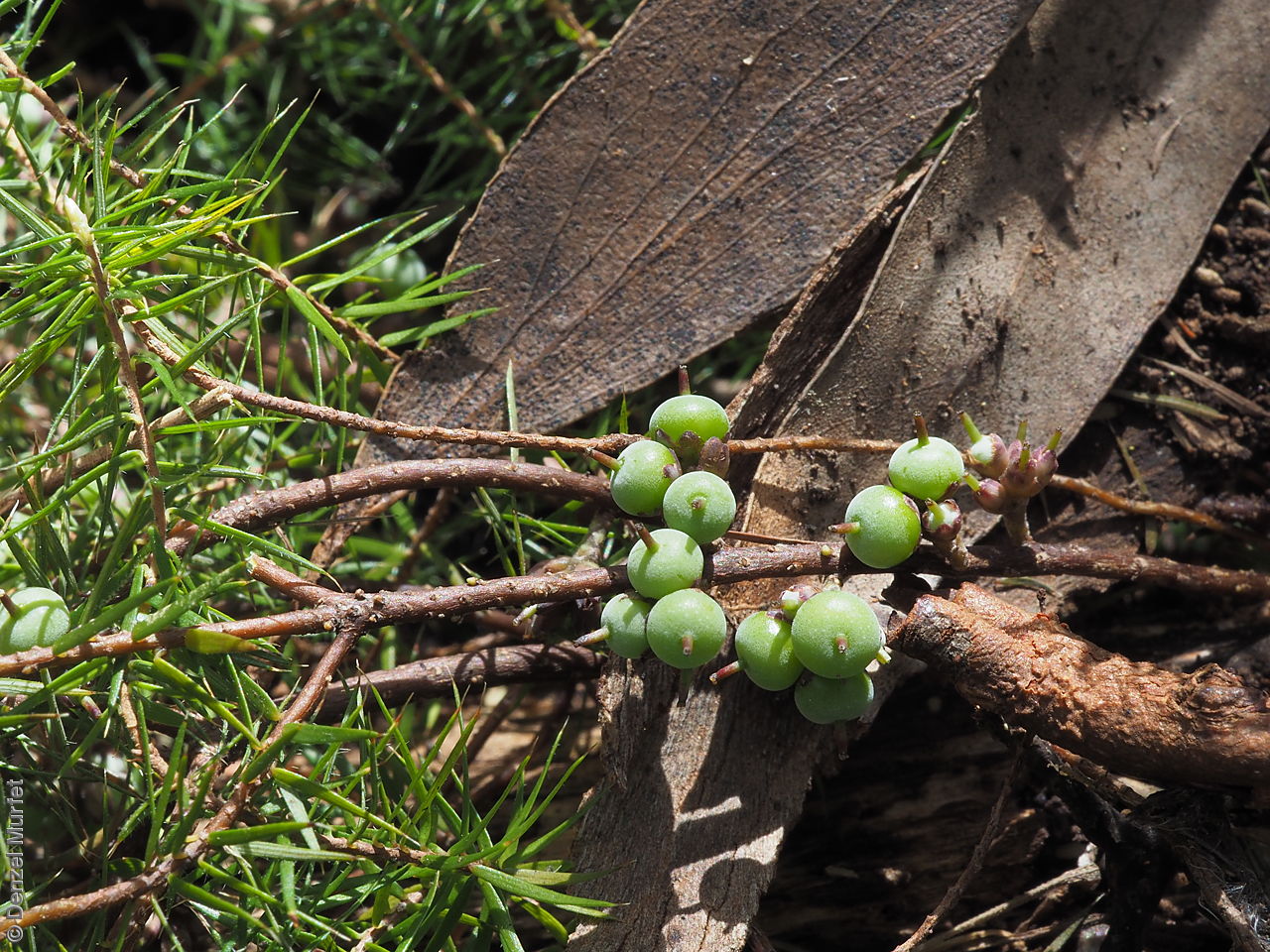
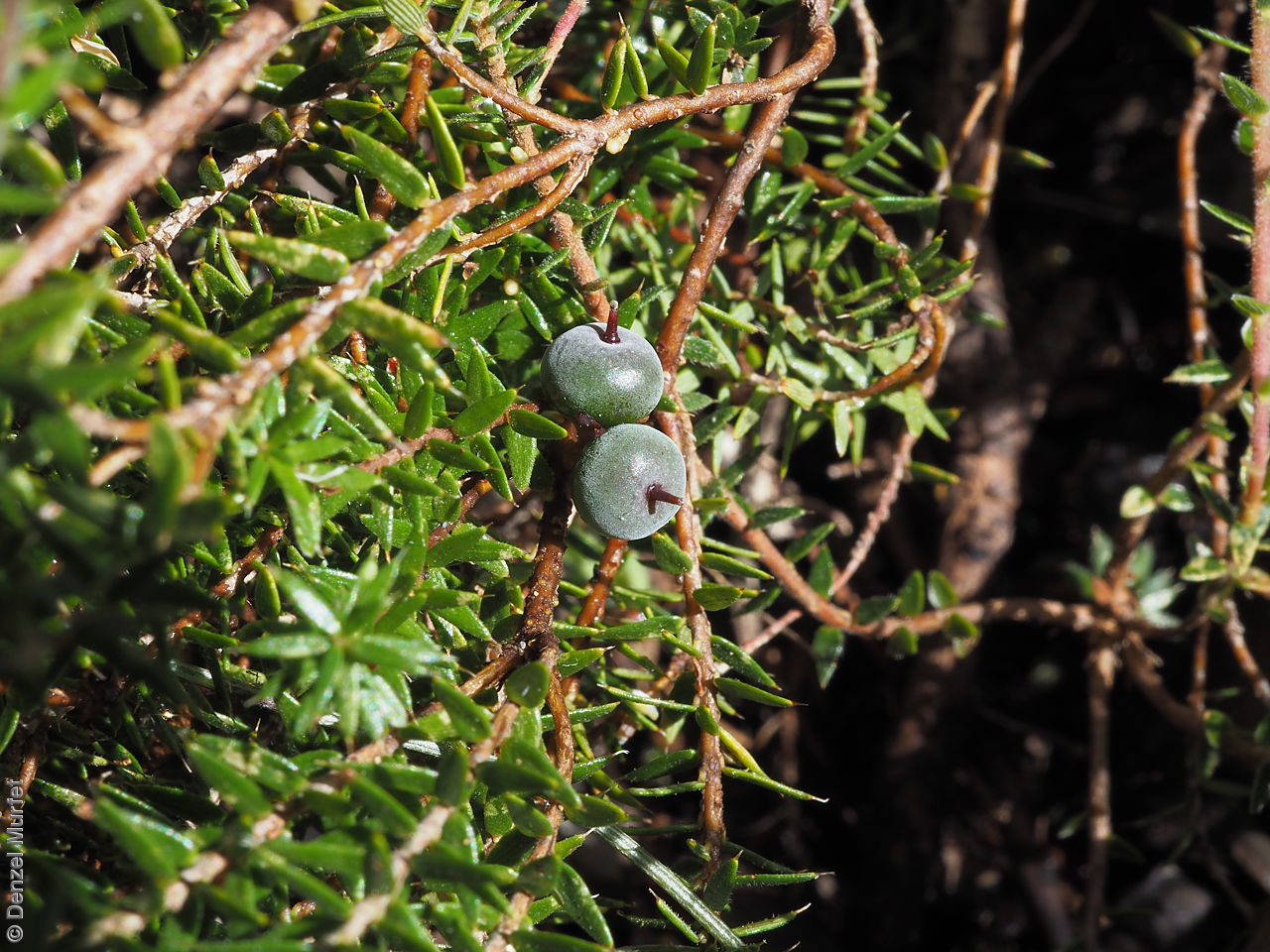
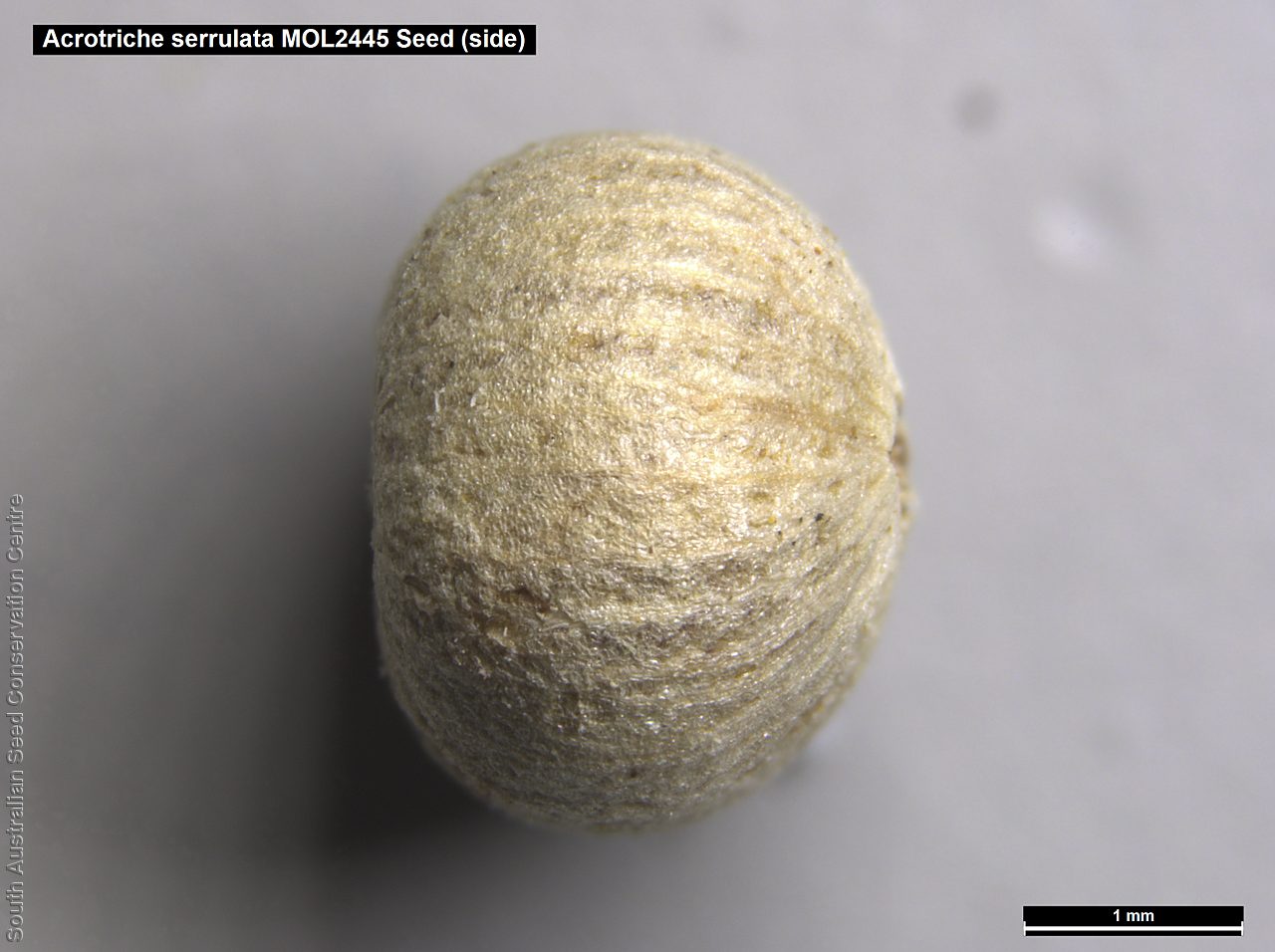
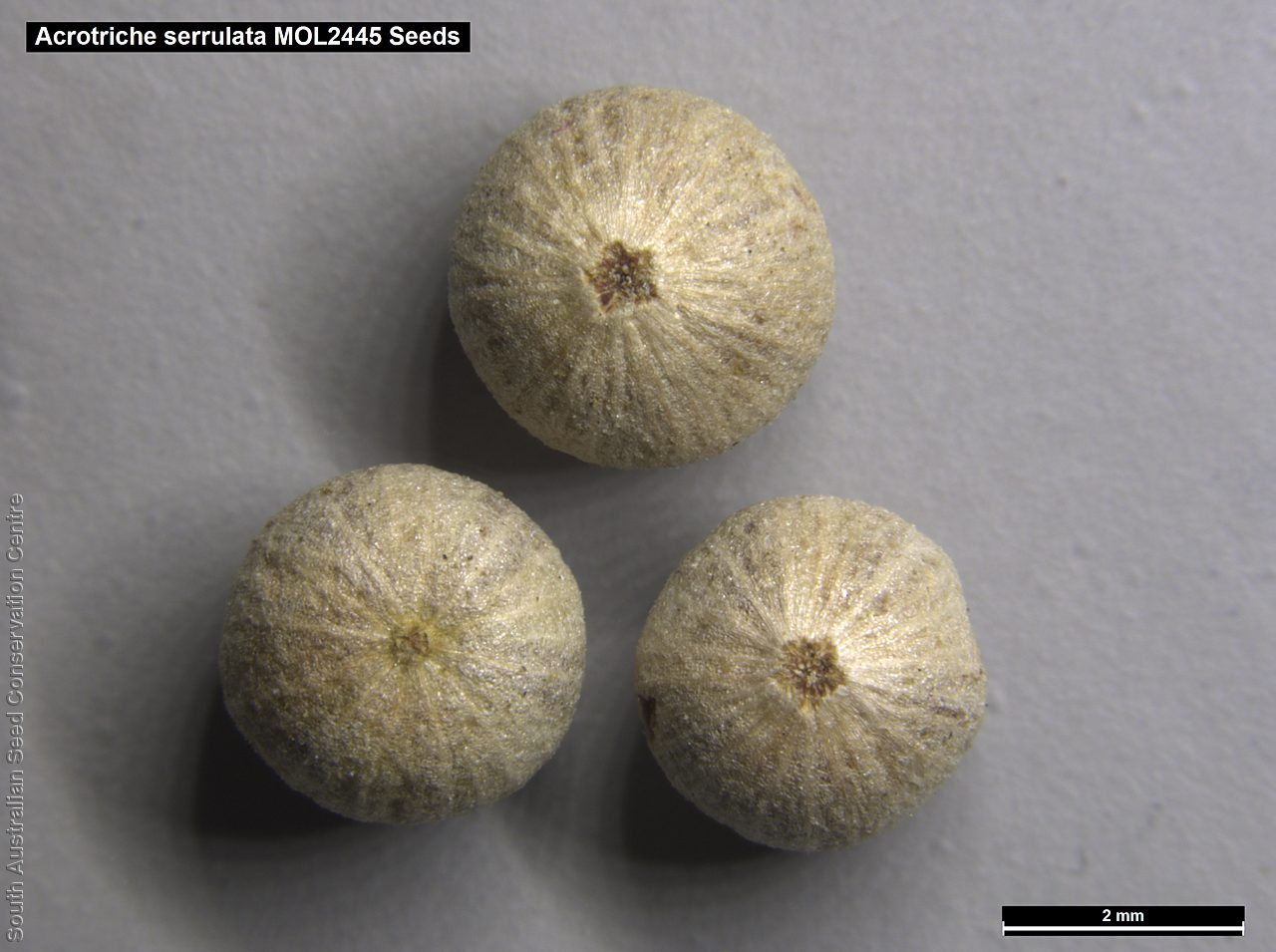
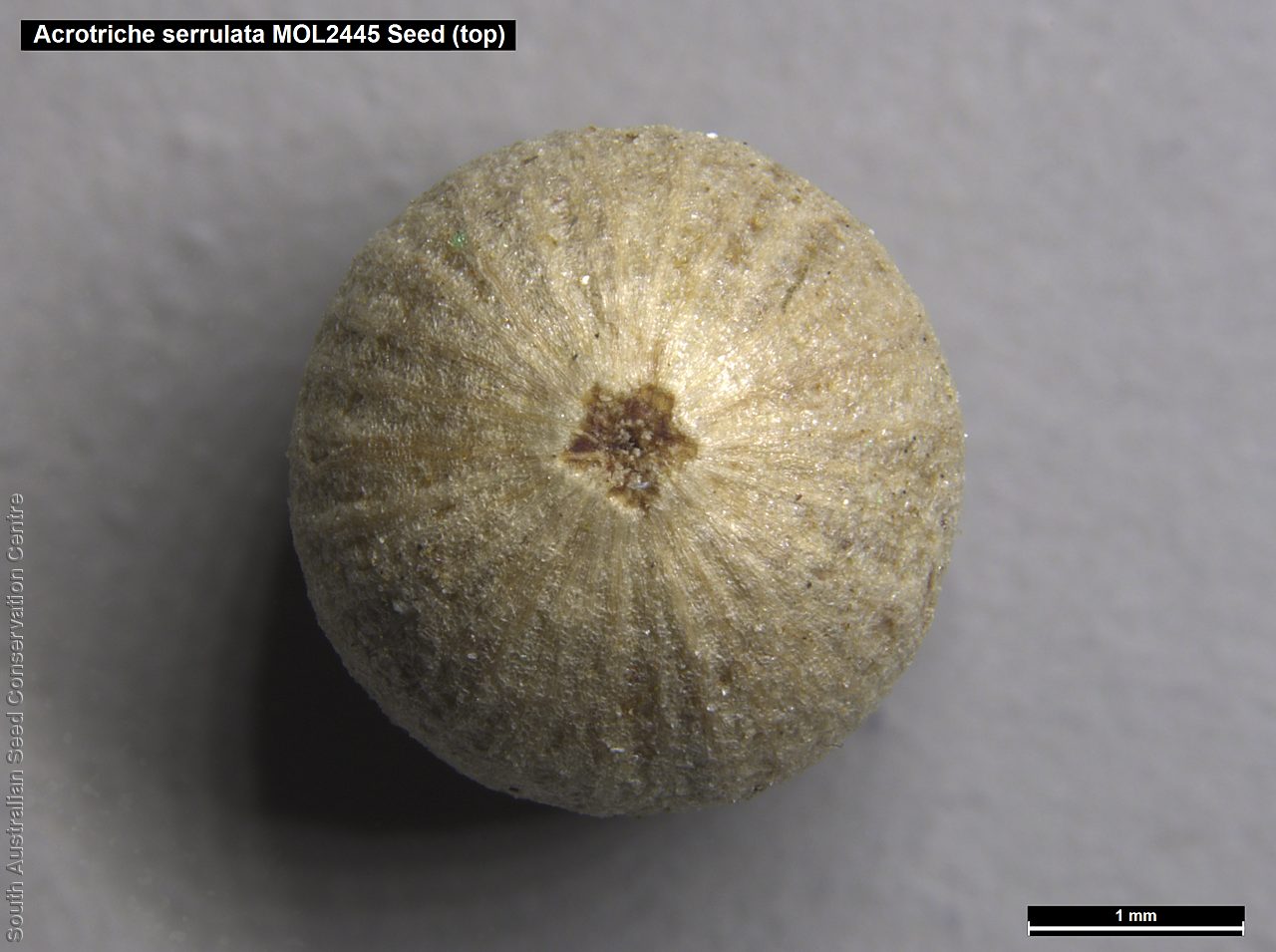


Botanical art
Prior names
Styphelia serrulata
Common names
Honeypots
Cushion Ground-berry
Etymology
Acrotriche from the Greek 'akron' meaning summit and 'thrix' meaning hair, alluding to the tuft of hairs at the tip of the corolla lobes. Serrulata from the Latin 'serrulatus' meaning small-toothed, referring to leaf margins.
Distribution and status
Found in the southern Mount Lofty Ranges and the South-east in South Australia, growing on sandy, loamy or skeletal soil in woodland, heathland, coastal scrub and mallee shrubland. Also found in New South Wales, Victoria and Tasmania. Native. Common in South Australia. Common in the other States.
Herbarium regions: Murray, Southern Lofty, South Eastern, Green Adelaide
NRM regions: Adelaide and Mount Lofty Ranges, South Australian Murray-Darling Basin, South East
AVH map: SA distribution map (external link)
Plant description
Dense, prostrate to decumbent shrub to 90 cm across; young branches red-brown, older stems dark-brown to grey-brown with hairy branchlets. Leaves flat, linear-lanceolate to lanceolate, to 13 mm long and 2.5 mm wide, sparsely hairy on both surfaces; lower surface with 3-7 unbranched subparallel veins; margins serrated. Inflorescence in a small spike with 5-12 tubular flowers with corolla sometimes maroon-tinged; tube transluscent, lobes green. Flowering between August and September. Fruits are flattened spherical fruit to 3.5 mm long and 4.5 mm wide, greenish but turning whitish as it mature; scarcely succulent. Seed embryo type is linear underdeveloped.
Seed collection and propagation
Collect seeds between October and February. Lift branches carefully to locate the fruits. Collect berries that are turning creamy white and soft with a hard seed inside. Place the berries in a bucket of water and rub the flesh off with your hands. Drain the water and wash again if required to remove all the flesh. Then spread the wet seeds on some paper towel and leave to dry. Store the seeds with a desiccant such as dried silica beads or dry rice, in an air tight container in a cool and dry place.